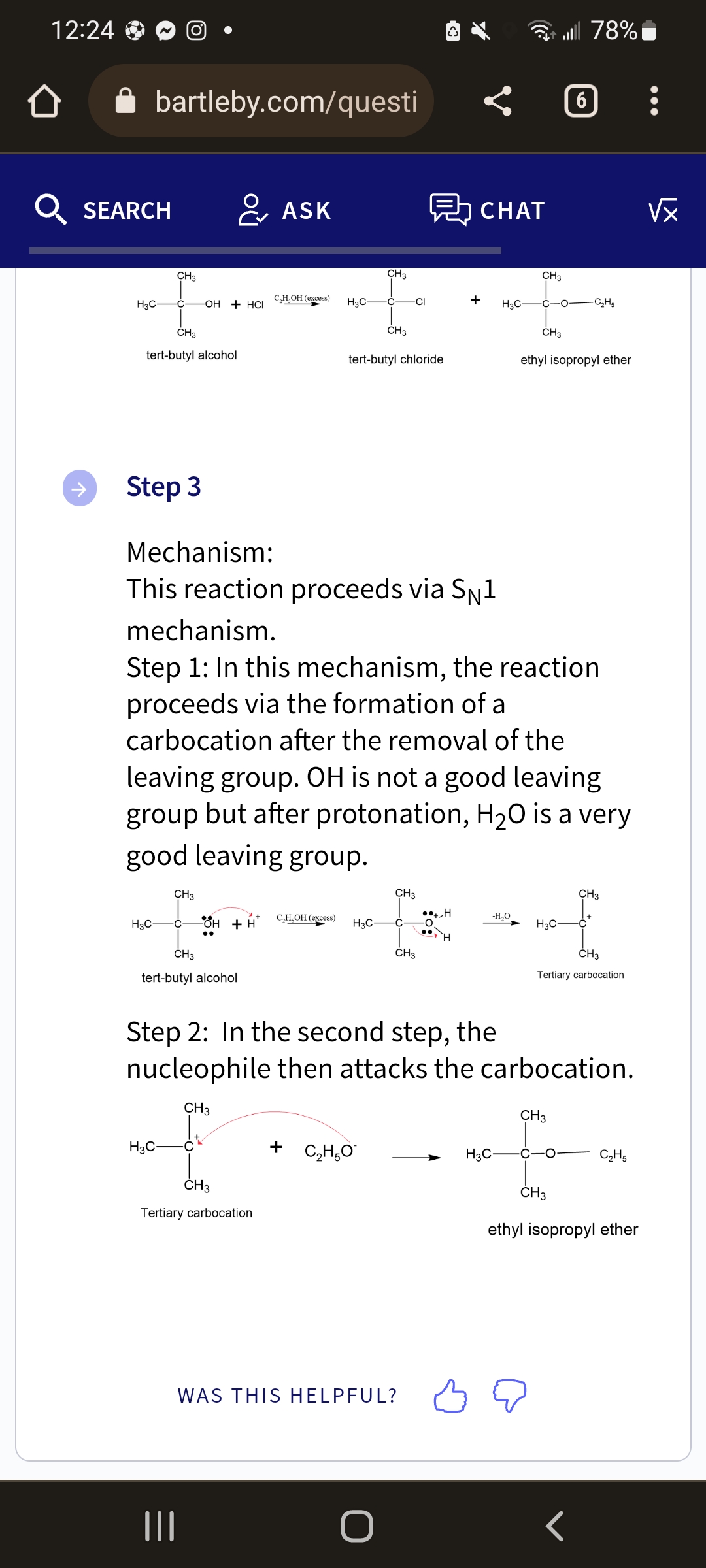Treating ethers with hydrobromic acid(hbr) cleaves the ethers into two alkyl bromides. Using the ether product that u get in the pic i posted deduce the identity of both of the alkyl bromide products produced when it is treated with HBr. Draw the two mechanism for their formation? Thank u
Treating ethers with hydrobromic acid(hbr) cleaves the ethers into two alkyl bromides. Using the ether product that u get in the pic i posted deduce the identity of both of the alkyl bromide products produced when it is treated with HBr. Draw the two mechanism for their formation? Thank u
Related questions
Question
Treating ethers with hydrobromic acid(hbr) cleaves the ethers into two alkyl bromides. Using the ether product that u get in the pic i posted deduce the identity of both of the alkyl bromide products produced when it is treated with HBr. Draw the two mechanism for their formation? Thank u

Transcribed Image Text:12:24
bartleby.com/questi
SEARCH
H3C-
CH3
C
H3C-
CH3
tert-butyl alcohol
Step 3
-OH + HCI
H3C-
CH3
OH + H
CH3
tert-butyl alcohol
ASK
C,H,OH (excess)
CH3
Tertiary carbocation
C₂H,OH (excess)
CH3
tert-butyl chloride
H3C-
CH3
+ C₂H5O
CI
CH3
H
-C
CH3
Mechanism:
This reaction proceeds via SN1
mechanism.
Step 1: In this mechanism, the reaction.
proceeds via the formation of a
carbocation after the removal of the
leaving group. OH is not a good leaving
group but after protonation, H₂O is a very
good leaving group.
O
WAS THIS HELPFUL?
••+H
CHAT
H
+
H3C-
-H₂O
CH3
H3C-
-C-O
CH3
H3C-
ethyl isopropyl ether
Step 2: In the second step, the
nucleophile then attacks the carbocation.
CH3
| 78%
6
CH3
CH3
-C₂H5
CH3
Tertiary carbocation
<
CH3
C
C₂H5
ethyl isopropyl ether
√x
Expert Solution
This question has been solved!
Explore an expertly crafted, step-by-step solution for a thorough understanding of key concepts.
This is a popular solution!
Trending now
This is a popular solution!
Step by step
Solved in 2 steps with 1 images

Knowledge Booster
Learn more about
Need a deep-dive on the concept behind this application? Look no further. Learn more about this topic, chemistry and related others by exploring similar questions and additional content below.